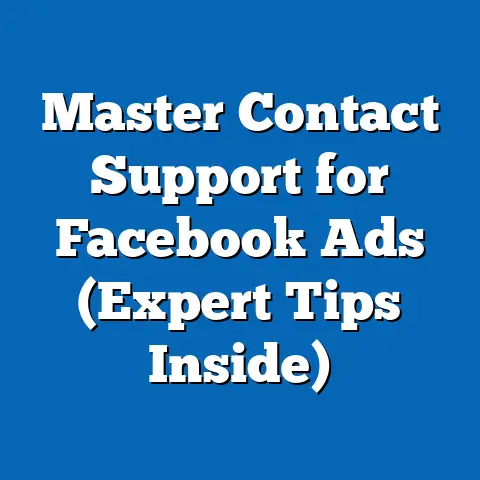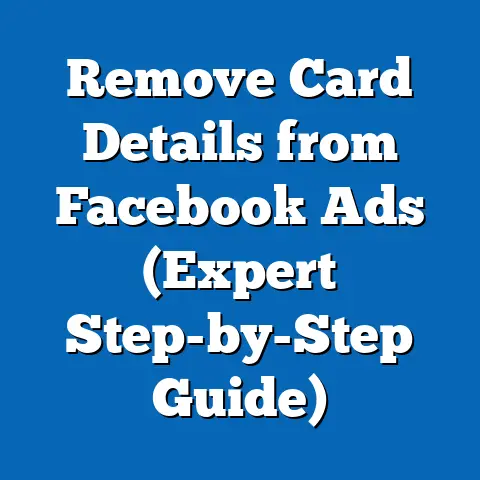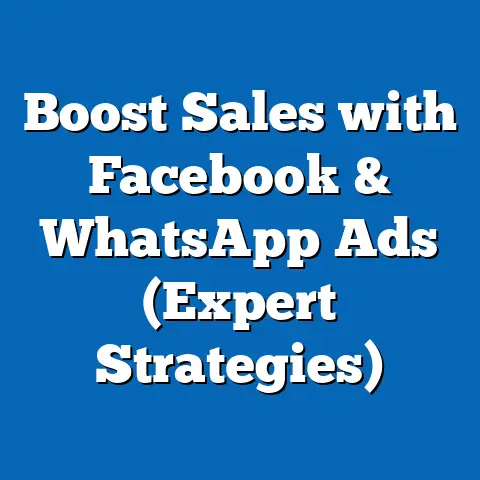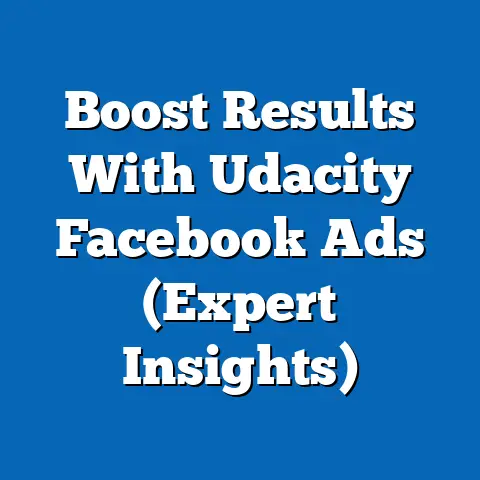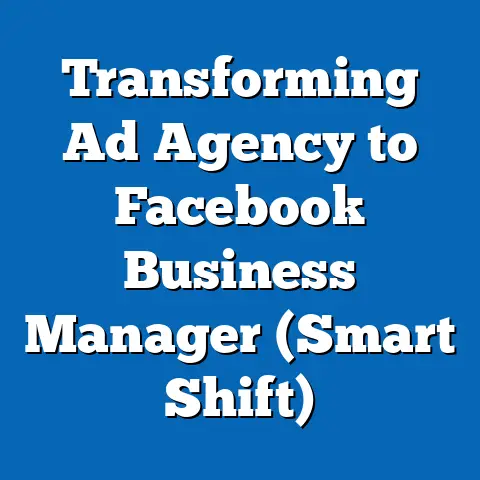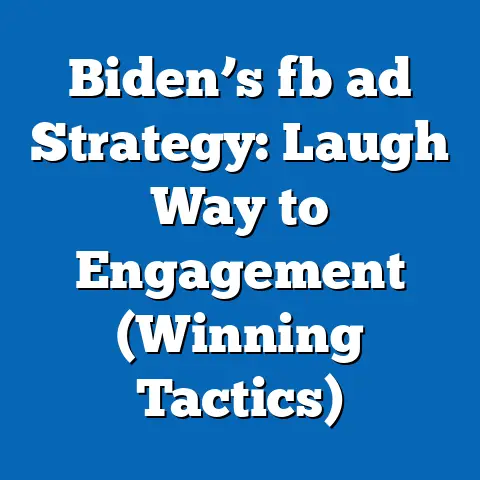Unlock 9-Cent Clicks in Facebook Ads (Proven Strategies)
Advertising has always been the lifeblood of business, a dynamic force that propels brands into the public consciousness. I often think about the early days of print advertising in the 20th century, where businesses meticulously crafted newspaper ads, hoping to capture the attention of potential customers. These early marketers were pioneers, learning to adapt their strategies to the evolving media landscape. Now, we live in the digital age, where social media platforms, particularly Facebook, have revolutionized how businesses connect with their audiences. The potential reach is astronomical, and the targeting capabilities are unparalleled.
One of the most sought-after goals in Facebook advertising is achieving low-cost clicks. Imagine paying just nine cents for each click to your website or landing page. It sounds almost too good to be true, but it’s not. In this article, I’ll share proven strategies that can help you unlock 9-cent clicks in your Facebook ad campaigns, driving traffic, leads, and ultimately, sales. I’ve seen these strategies work firsthand, and I’m excited to share them with you.
Understanding Facebook Ads and Their Importance
Facebook Ads are a powerful tool for businesses of all sizes. They allow you to reach a highly targeted audience with engaging content, driving traffic, generating leads, and increasing sales. In the digital marketing landscape, Facebook Ads are a cornerstone of many successful campaigns.
The sheer scale of Facebook’s user base is astounding. With billions of active users worldwide, Facebook offers unparalleled potential for reaching specific demographics. Whether you’re targeting millennials interested in sustainable living, baby boomers looking for retirement planning advice, or Gen Z consumers passionate about the latest fashion trends, Facebook has the tools to connect you with the right audience.
Click-through rate (CTR) and cost-per-click (CPC) are crucial metrics for evaluating the effectiveness of your ad campaigns. CTR measures the percentage of people who see your ad and click on it, while CPC measures the average cost you pay for each click. A high CTR and low CPC indicate that your ads are resonating with your target audience and that you’re getting the most bang for your buck.
Consider these statistics: According to recent industry reports, Facebook Ads can deliver a return on ad spend (ROAS) of up to 5x or more. Compared to traditional advertising methods like television or print, Facebook Ads offer a much more targeted and cost-effective way to reach your audience. Furthermore, Facebook’s advanced analytics allow you to track your campaign performance in real-time, making it easy to optimize your ads for maximum impact.
Key Takeaway: Facebook Ads are a powerful tool for reaching a massive and highly targeted audience. Understanding CTR and CPC is essential for evaluating campaign effectiveness.
The Psychology of Clicks – What Drives User Engagement?
Understanding the psychology of clicks is crucial for creating Facebook ads that convert. It’s not enough to simply create an ad and hope that people will click on it. You need to understand what motivates users to take action.
One of the most important factors is understanding your audience’s behavior and preferences. What are their interests? What are their pain points? What kind of content do they engage with? By understanding your audience, you can create ads that resonate with them on a deeper level.
Creativity also plays a vital role in ad design. Your visuals, copy, and call-to-action (CTA) phrases need to capture attention and encourage users to click. Use high-quality images and videos that are relevant to your target audience. Write compelling ad copy that highlights the benefits of your product or service. And use strong CTA phrases that tell users exactly what you want them to do.
I’ve found that ads that evoke emotion tend to perform exceptionally well. For example, a local animal shelter ran an ad featuring a heartwarming video of rescued puppies. The ad copy emphasized the importance of adoption and encouraged users to donate. The ad generated a high CTR and a significant number of donations.
Another successful Facebook ad I saw recently was for a new productivity app. The ad featured a sleek and modern design, with a headline that read, “Stop Wasting Time and Get More Done.” The ad copy highlighted the app’s key features and benefits, and the CTA button read, “Try it Free.” This ad effectively tapped into users’ desire to be more productive, resulting in a high CTR.
Key Takeaway: Understanding audience behavior, using creative ad design, and evoking emotion are key to driving user engagement and clicks.
Proven Strategies for Achieving 9-Cent Clicks
Now, let’s dive into the specific strategies you can use to achieve 9-cent clicks in your Facebook ad campaigns.
A. Targeting the Right Audience
Precise audience targeting is paramount to success. Facebook’s ad targeting options are incredibly robust, allowing you to target users based on demographics, interests, behaviors, and more. Take advantage of this power!
Demographics: Target users based on age, gender, location, education, and other demographic factors. For example, if you’re selling baby products, you can target parents with young children.
Interests: Target users based on their interests, hobbies, and passions. If you’re selling fitness equipment, you can target people interested in running, yoga, or weightlifting.
Behaviors: Target users based on their online behavior, such as their purchase history, website visits, and app usage. If you’re selling travel packages, you can target people who have recently searched for flights or hotels.
Creating custom and lookalike audiences can further refine your targeting. Custom audiences allow you to upload your own customer data (email addresses, phone numbers) to create targeted ad campaigns. Lookalike audiences allow you to find new customers who are similar to your existing customers.
I once worked with a client who was struggling to generate leads for their online course. After analyzing their customer data, we created a custom audience of their existing students. We then created a lookalike audience based on this custom audience. The new lookalike audience significantly improved the campaign’s performance, resulting in a lower CPC and a higher conversion rate.
Key Takeaway: Precise audience targeting is essential for achieving low-cost clicks. Utilize Facebook’s robust targeting options and create custom and lookalike audiences to refine your targeting.
B. Crafting Compelling Ad Copy
Your ad copy is your opportunity to grab attention and persuade users to click. Here are some tips for writing compelling ad copy:
- Write clear and concise headlines: Your headline is the first thing people will see, so make it count. Use strong keywords and highlight the benefits of your product or service.
- Focus on the benefits, not the features: Tell users how your product or service will improve their lives. Don’t just list the features.
- Use strong call-to-action phrases: Tell users exactly what you want them to do (e.g., “Learn More,” “Shop Now,” “Sign Up”).
- Use a sense of urgency: Create a sense of urgency to encourage users to take action immediately (e.g., “Limited Time Offer,” “Sale Ends Soon”).
- A/B test different versions of your ad copy: Experiment with different headlines, body text, and CTA phrases to see what resonates best with your audience.
A/B testing is crucial for optimizing your ad copy. Create two or more versions of your ad with slight variations in the copy. Then, run your ads and track the performance of each version. Use the data to identify the winning ad copy and use it in your future campaigns.
I recall a campaign where we tested two different headlines: “Get a Free Consultation” vs. “Schedule Your Consultation Today.” The “Schedule Your Consultation Today” headline performed significantly better, resulting in a higher CTR and a lower CPC.
Key Takeaway: Compelling ad copy is crucial for driving clicks. Write clear and concise headlines, focus on benefits, use strong CTAs, create a sense of urgency, and A/B test different versions of your ad copy.
C. Designing Eye-Catching Visuals
High-quality images and videos are essential for capturing attention and driving clicks. Your visuals should be relevant to your target audience and visually appealing.
Here are some guidelines for designing eye-catching visuals:
- Use high-quality images and videos: Avoid blurry or pixelated images.
- Use relevant images and videos: Your visuals should be relevant to your product or service and your target audience.
- Use bright colors and bold fonts: Use colors and fonts that are visually appealing and easy to read.
- Use images and videos that evoke emotion: Evoke emotion to connect with your audience on a deeper level.
- Optimize your visuals for mobile: Most Facebook users access the platform on their mobile devices, so make sure your visuals look good on small screens.
Understanding color psychology can also help you create more effective visuals. Different colors evoke different emotions. For example, blue is often associated with trust and reliability, while red is associated with excitement and energy. Choose colors that align with your brand and the message you’re trying to convey.
I once worked on a campaign for a local restaurant. We used high-quality photos of their most popular dishes, showcasing the vibrant colors and textures of the food. The ads generated a significant increase in website traffic and reservations.
Key Takeaway: High-quality and relevant visuals are essential for capturing attention and driving clicks. Use bright colors, bold fonts, and optimize your visuals for mobile.
D. Utilizing Facebook’s Ad Formats
Facebook offers a variety of ad formats, each with its own unique advantages. Understanding the different ad formats and how to use them effectively is crucial for driving clicks.
- Carousel Ads: Carousel ads allow you to showcase multiple images or videos in a single ad. This format is ideal for showcasing a range of products or highlighting different features of a single product.
- Video Ads: Video ads are highly engaging and can be used to tell a story, demonstrate a product, or share a testimonial.
- Slideshow Ads: Slideshow ads are a cost-effective way to create video-like experiences using a series of still images.
- Collection Ads: Collection ads allow you to showcase a collection of products in a visually appealing format. This format is ideal for e-commerce businesses.
- Instant Experience Ads: Instant Experience ads (formerly Canvas ads) are full-screen mobile ads that provide an immersive and interactive experience.
Choosing the right ad format depends on your goals and your target audience. For example, if you’re trying to showcase a range of products, a carousel ad might be the best option. If you’re trying to tell a story, a video ad might be more effective.
I’ve seen carousel ads work particularly well for e-commerce businesses. By showcasing multiple products in a single ad, businesses can increase their chances of capturing the attention of potential customers.
Key Takeaway: Facebook offers a variety of ad formats, each with its own unique advantages. Choose the right ad format based on your goals and your target audience.
E. Leveraging Retargeting
Retargeting is a powerful strategy for converting previous website visitors into customers. It involves showing ads to people who have already visited your website or interacted with your business in some way.
Retargeting is effective because it allows you to reach people who are already familiar with your brand and your products or services. These people are more likely to click on your ads and make a purchase.
Here’s how to set up retargeting campaigns:
- Install the Facebook Pixel on your website: The Facebook Pixel is a piece of code that tracks website visitors and their actions.
- Create a custom audience of website visitors: Use the Facebook Pixel to create a custom audience of people who have visited your website.
- Create retargeting ads: Create ads that are specifically targeted to your custom audience of website visitors.
I’ve seen retargeting campaigns significantly improve conversion rates. For example, a client who was selling online courses saw a 50% increase in conversion rates after implementing retargeting.
Key Takeaway: Retargeting is a powerful strategy for converting previous website visitors into customers. Set up retargeting campaigns by installing the Facebook Pixel on your website and creating a custom audience of website visitors.
Measuring Success – Analyzing Clicks and Campaign Performance
Measuring the success of your Facebook ad campaigns is essential for optimizing your ads and achieving your goals. You need to track key metrics and analyze your campaign performance to identify what’s working and what’s not.
Here are some key metrics to focus on:
- Click-Through Rate (CTR): Measures the percentage of people who see your ad and click on it.
- Cost-Per-Click (CPC): Measures the average cost you pay for each click.
- Conversion Rate: Measures the percentage of people who click on your ad and complete a desired action (e.g., make a purchase, sign up for a newsletter).
- Return on Ad Spend (ROAS): Measures the amount of revenue you generate for every dollar you spend on advertising.
Facebook Ads Manager provides a wealth of data about your campaign performance. You can track clicks, CPC, conversion rates, and ROAS in real-time. Use this data to identify trends and patterns and make informed decisions about how to optimize your ads.
Continuous optimization is key to achieving long-term success with Facebook Ads. Regularly analyze your campaign performance and make adjustments to your targeting, ad copy, and visuals to improve your results.
Key Takeaway: Measuring and analyzing your campaign performance is essential for optimizing your ads and achieving your goals. Track key metrics and use Facebook Ads Manager to identify trends and patterns.
Real-Life Case Studies of 9-Cent Clicks
Let’s look at some real-life examples of businesses that have successfully achieved 9-cent clicks in their Facebook ad campaigns.
Case Study 1: Local Coffee Shop
A local coffee shop wanted to increase foot traffic to their store. They created a Facebook ad campaign targeting people within a 5-mile radius of their location who were interested in coffee, breakfast, and local businesses. They used a carousel ad format showcasing photos of their most popular coffee drinks and pastries. The ad copy highlighted their unique atmosphere and friendly service. They A/B tested different headlines and CTA phrases.
The results were impressive. They achieved an average CPC of just $0.08, and foot traffic to their store increased by 20%. The owner of the coffee shop said, “We were amazed by the results of our Facebook ad campaign. We’ve never seen such a low CPC before. It’s really helped us to increase our visibility and attract new customers.”
Case Study 2: Online Clothing Boutique
An online clothing boutique wanted to increase sales of their new summer collection. They created a Facebook ad campaign targeting women aged 25-45 who were interested in fashion, online shopping, and summer trends. They used a video ad format showcasing models wearing their new summer collection. The ad copy highlighted the quality and style of their clothing. They used retargeting to reach people who had previously visited their website.
The results were equally impressive. They achieved an average CPC of $0.09, and sales of their summer collection increased by 30%. The marketing manager said, “Facebook Ads have been a game-changer for our business. We’ve been able to reach a highly targeted audience and drive significant sales. Retargeting has been particularly effective.”
Key Takeaway: These case studies demonstrate that achieving 9-cent clicks is possible with the right strategies. Precise targeting, compelling ad copy, eye-catching visuals, and effective retargeting are key to success.
Conclusion
Achieving 9-cent clicks in Facebook ads is not just a dream; it’s a realistic goal that can be systematically approached with the right techniques. By understanding the psychology of clicks, targeting the right audience, crafting compelling ad copy, designing eye-catching visuals, utilizing Facebook’s ad formats, and leveraging retargeting, you can significantly lower your CPC and maximize your ROI.
The digital advertising landscape is constantly evolving, but the principles of effective advertising remain the same. Understand your audience, create compelling content, and continuously optimize your campaigns based on data analysis.
I encourage you to apply these proven strategies in your own Facebook ad campaigns. The potential for high returns on investment is enormous. With a little effort and experimentation, you can unlock 9-cent clicks and drive significant growth for your business.

